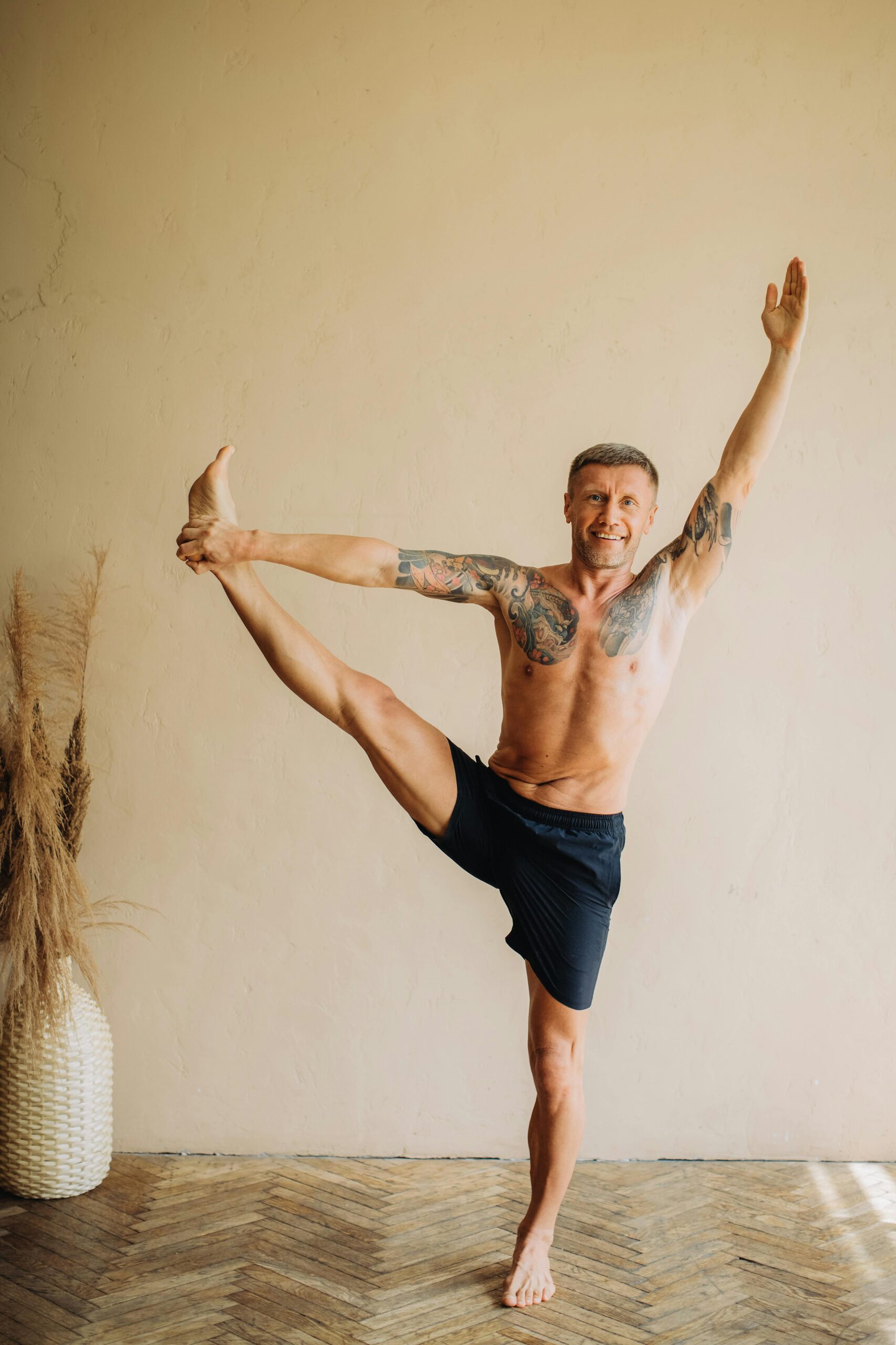We rarely think about balance until we lose it. Whether you’re a yogi holding a tree pose, a parent chasing a toddler, or a grandparent navigating icy sidewalks, the ability to stand on one leg is more than a party trick—it’s a window into your overall health. But how long should you be able to balance on one leg as you age? And why does it matter?
In this blog, we’ll break down age-specific benchmarks, explore the science behind balance, and share practical tips to improve yours—no matter your fitness level. Plus, we’ll dive into why this simple test might predict your longevity (spoiler: it’s backed by Harvard researchers).
Why Balance Matters More Than You Think
Balance isn’t just for gymnasts and tightrope walkers. It’s a cornerstone of everyday life, from tying your shoes to climbing stairs. But here’s the kicker: Research shows that poor balance correlates with higher risks of falls, injuries, and even early mortality. A 2022 study in the British Journal of Sports Medicine found that middle-aged and older adults who couldn’t stand on one leg for 10 seconds had double the risk of dying within the next decade.
Your balance is a team effort, involving your:
- Inner ear (vestibular system)
- Eyes (visual cues)
- Muscles and joints (proprioception)
- Brain (processing signals in real time)
As you age, these systems naturally decline—but the good news? Balance can be trained at any stage of life.
The One-Leg Balance Test: Age-by-Age Benchmarks
Let’s get practical. Below are general guidelines for how long you should aim to stand on one leg with your eyes open, based on age and health status. These are averages compiled from studies by institutions like the Mayo Clinic and the American Council on Exercise (ACE):
| Age Group | Average Time | Ideal Goal |
|---|---|---|
| 20s–30s | 40–60 seconds | 60+ seconds |
| 40s–50s | 20–40 seconds | 45+ seconds |
| 60s+ (Healthy) | 10–20 seconds | 30+ seconds |
| 60s+ (With Risks) | 5–10 seconds | 15+ seconds |
Note: “Risks” include conditions like arthritis, Parkinson’s, or a history of falls.
The Science Behind the Numbers
- In Your 20s–30s: Muscle mass and reaction time peak, making balance easier. If you struggle here, it’s often due to inactivity or poor posture (looking at you, desk workers!).
- In Your 40s–50s: Muscle loss begins (~3–5% per decade), and vision/nerve function subtly decline. Balance starts to “wobble” without maintenance.
- In Your 60s+: A mix of muscle atrophy, slower reflexes, and chronic conditions (e.g., diabetes) accelerates balance loss. But studies show consistent training can reverse 10+ years of decline.
How to Test Your Balance at Home
Step 1: Find a safe, open space (near a wall or chair for support if needed).
Step 2: Stand barefoot on a flat surface.
Step 3: Lift one foot 6 inches off the ground, knee bent at 45 degrees.
Step 4: Start a timer. Stop if you:
- Touch the ground with your raised foot
- Shift your standing foot more than an inch
- Grab support
Pro Tip: Record yourself. You’ll notice micro-adjustments (hip wobbles, arm flails) that hint at weaknesses.
“I Can’t Balance for 10 Seconds—Am I Doomed?”
Absolutely not. Balance is a skill, not a fixed trait. Meet Sarah, 52, who struggled to stand on one leg for 8 seconds after knee surgery. With daily practice (while brushing her teeth!), she now clocks 35 seconds. “It gave me back my confidence to hike and play with my grandkids,” she says.
5 Balance-Boosting Exercises for Every Age
- The Toothbrush Challenge
- Balance on one leg while brushing your teeth twice daily. Switch sides halfway.
- Heel-to-Toe Walk
- Walk in a straight line, placing the heel of one foot directly in front of the toes of the other (like a sobriety test).
- Tai Chi or Yoga
- Studies show Tai Chi reduces fall risk in older adults by 47%. Try the “Tree Pose” or “Warrior III.”
- Single-Leg Deadlifts
- Hold a light weight (or water bottle) and hinge forward, lifting one leg behind you.
- Balance Board or Cushion
- Stand on an unstable surface (a pillow works!) while watching TV.
Common Mistakes That Wreck Your Balance
- Staring at Your Feet: Focus on a fixed point ahead.
- Holding Your Breath: Breathe deeply to engage your core.
- Skipping Strength Training: Weak glutes and ankles destabilize you.
When to See a Professional
Sudden balance loss could signal:
- Inner ear infections
- Neurological issues (e.g., MS, stroke)
- Vitamin B12 deficiency
If you experience dizziness, vertigo, or frequent falls, consult a doctor or physical therapist.
The Bigger Picture: Balance as a Longevity Marker
Dr. Peter Attia, longevity expert, calls balance a “hidden vital sign.” In his book Outlive, he notes that balance tests often predict functional lifespan better than blood pressure or cholesterol. Why? Because staying upright requires coordination across multiple systems—a sign your body is aging well.
Final Thoughts: Small Efforts, Lifelong Rewards
You don’t need a gym membership or fancy equipment to improve your balance. Start with 2–3 minutes daily (try it during commercials or coffee breaks!). Track your progress, celebrate small wins, and remember: Every second you gain is insurance against future injuries.
Call to Action:
Test your balance today and share your time in the comments! How close are you to your age’s ideal goal? For more science-backed health tips, subscribe to our newsletter below.





